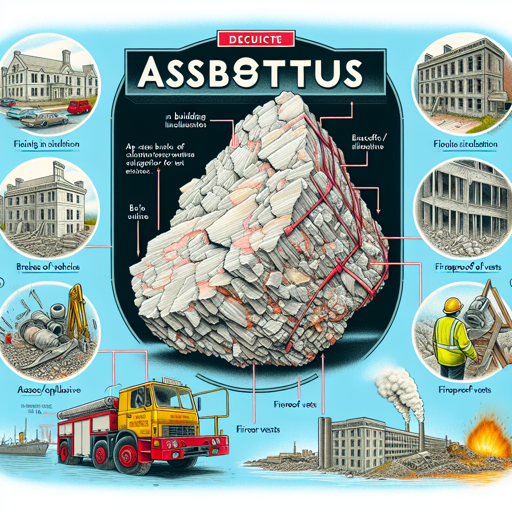Asbestos: A Journey Through Its Historical Uses
Explore the historical uses of asbestos and how its application declined over time due to health concerns.

Introduction
Asbestos, a naturally occurring mineral, has a history as rich and varied as the civilizations that utilized it. Known for its fire-resistant properties and versatility, it was widely used across various industries. However, the journey of asbestos has been marked by both triumph and tragedy. This article explores the historical uses of asbestos and its subsequent decline due to health concerns.
The Dawn of Asbestos
Asbestos has been in use for over 4,000 years. It found its first applications in pottery and candle wicks due to its fire-resistant properties. The ancient Egyptians used it to prepare the embalmed bodies of their pharaohs, ensuring their eternal preservation.
Asbestos in the Industrial Revolution
The industrial revolution in the 19th century marked a significant turning point for asbestos. Its heat-resistant, sound-absorbent, and insulating properties made it a sought-after material in the construction, shipbuilding, and automotive industries.
Decline of Asbestos
The decline of asbestos began in the mid-20th century when health risks associated with asbestos exposure came to light. Long-term inhalation of asbestos fibers can lead to serious health issues such as lung cancer, mesothelioma, and asbestosis.
“Asbestos: A magic mineral with a deadly legacy.” - Unknown
| Period | Use of Asbestos | Reason for decline |
|---|---|---|
| Ancient Times | Pottery, candle wicks, mummification | N/A |
| Industrial Revolution | Construction, shipbuilding, automotive industries | N/A |
| Mid-20th Century Onwards | Declining use | Health risks |
The Legacy of Asbestos
While the use of asbestos has significantly declined, its impact is still felt today. Old buildings and structures may still contain asbestos, posing a risk to those who come into contact with the material.
Conclusion
The historical journey of asbestos serves as a reminder of the delicate balance between harnessing natural resources and ensuring public health safety. While its fire-resistant properties were celebrated, the serious health risks it posed ultimately led to its decline.
To learn more about the history of asbestos and its impact, you can visit the World Health Organization’s page on Asbestos.